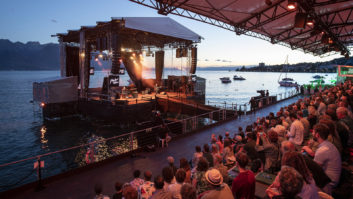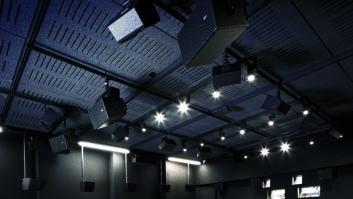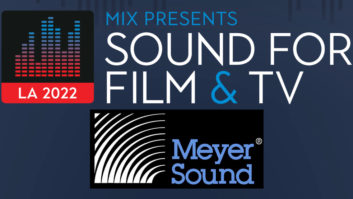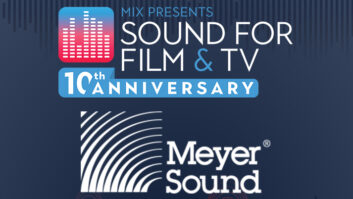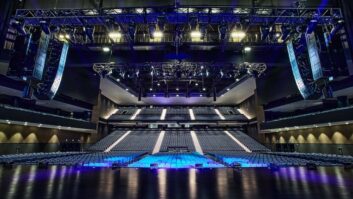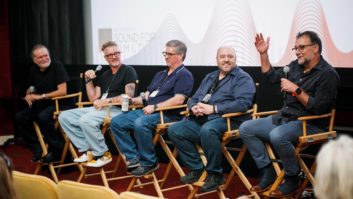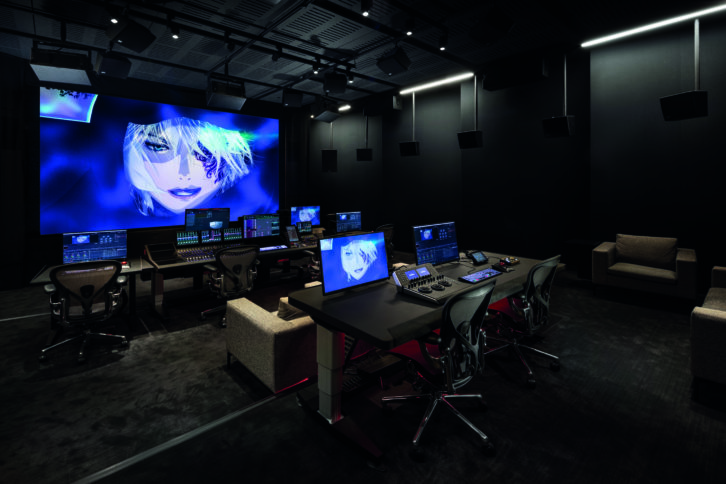
Streaming services for film and television were already competing with exhibition and cable as the primary means of media distribution when the Covid-19 pandemic hit. Then, once it became clear that the shutdowns would last a bit longer than originally expected, the floodgates opened.
Consumers started upgrading their home offices and their entertainment systems, ordering bigger, newer, more advanced monitors and displays. Disney+, HBO Max, Paramount+, Discovery+ and others launched to much fanfare over the next 12 months, joining juggernauts Prime Video, Hulu, Apple TV+ and, of course, Netflix, the company that first changed video rental, then on-demand viewing, and then streaming. Quite simply, Netflix changed the way consumers consume content.
At the same time, in just a few short years, the company has earned a seat at the Hollywood table, alongside Disney, Universal, Sony, Warner Bros., Marvel and the rest. In hindsight, it almost seems that the rise was to be expected. Few could have foreseen how fast it happened.
Netflix made a key decision nearly a decade ago when it started adding real estate and easing its way into Hollywood: It would not take work away from the established facilities by building dozens of edit suites and re-recording stages. Instead, the company would focus on improving the audio and video streaming experience through research, innovation, quality control, and creative and technological partnerships.
The “Crystal LED Lab” on the Netflix campus in Los Angeles, which quietly debuted six months ago this month and is featured on this month’s cover, is a perfect example of what can be accomplished when smart people at leading technology companies—Netflix, Sony and Meyer Sound, with Visioneering Design bringing it all together—unite for a common purpose: to deliver the best possible, reference-quality experience in picture and sound; and to show creatives what’s possible.
Picture Meets Sound
While the Hollywood stage was completed in 2020 after about 12 months of planning and construction, initial concepts and discussions between Netflix and Sony began taking place as far back as 2017. The following year, Sony showed its Crystal LED direct-view display technology at Cinema Con, and Kevin O’Connor, Sony Director of B2B Sales, called Miles Rogers, head of the Cinema Department at Meyer Sound, to ask if he could provide speakers for their booth.
“We told Miles that we have this new technology, and it’s direct view, so we all knew there were going to be some sound considerations,” O’Connor says. “That’s where Miles got a big grin, and he came back saying, ‘We are already in motion with this, and I cannot think of a better pairing than Sony and Meyer Sound.’
“Around the same time, we were meeting with Jimmy Fusil at Netflix and had shown him the display a few times,” he continues. “We felt that we had the picture where we wanted it. But we all knew that the big question was going to be, ‘Can we get it to actually sound the right way?’”
Put simply, the challenge in providing audio playback for direct-view, or “emissive,” displays is that the screen Left-Center-Right speakers can’t be placed behind the screen. For the past 90 years, projection and perforated screens have anchored the B-Chain, and cinema speakers, playback standards and mixing techniques have been based around that sense of headroom, imaging and clarity.
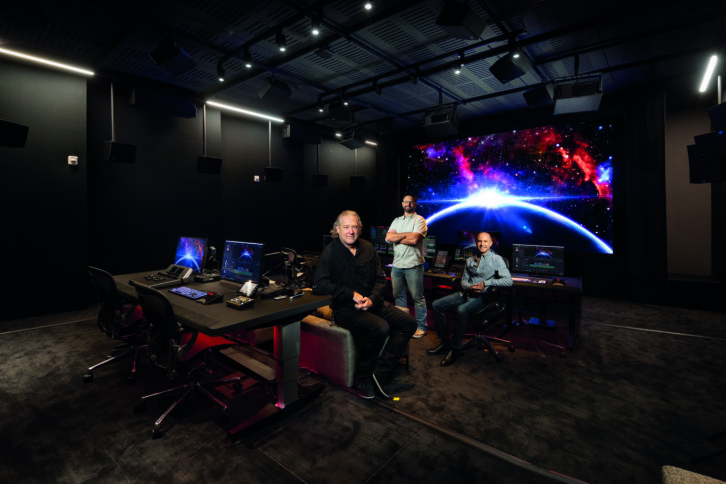
Competitors have offered different solutions over the past couple of years, most of them some variation of left and right just outside the edges of the “screen,” with the center channel above it and aimed down. The placement is even part of the Dolby Atmos recommended spec for direct view displays. For obvious reasons, this can present problems such as effects localization, dialog clarity, music imaging, and overall and relative levels—especially when taking into account translation from theatrical to home environments, and vice versa.
“We started working on possible solutions in 2017 when it became clear that these emissive displays were coming,” Rogers recalls. “We went through all of the different versions of, ‘What does a phantom center sound like if you put loudspeakers above and below the screen? What does imaging and phantom center sound like if you put loudspeakers left and right of the screen?’ We found that each of these approaches had compromises in that they worked for one seat, or maybe three or six seats, but not for the majority of seats in the room.
“Then we decided to focus on embracing the nature of these displays, which are acoustically reflective, and find a way to use that to not only reflect and put sound into the room, but also to create a sound image where the listener localizes to the left-center-right positions on screen.”
Reflected sound has mostly been thought of as something to fear by studio designers and mix engineers alike, something to be “dealt with.” Early reflections, console reflections, second-order reflections, frequency cancellations, frequency amplification and so on. John Meyer didn’t invent the concept of making reflections an ally, though his company now has a patent pending for “optimum reproduction of discrete screen-channel audio on large-scale direct view (“emissive”) video displays.”
“What makes Ultra Reflex different is that it’s full bandwidth, meaning that it’s not just about the frequencies that can be controlled and reflected off of the wall,” Rogers says. “It’s about the combination of the reflected sound with the low-frequency, direct-radiating sound that couples together in the audience area to give you a full-bandwidth, full dynamic range, powerful cinematic experience.”
But Will It Work?
Crystal LED technology is not new. Sony introduced it publicly as early as 2012, but nine years ago the market for high-end direct view displays was tiny.
In the following years, a market began to emerge on the corporate side, and Sony began installing a handful of large displays around the world, including a 65×8-foot wall in the lobby of Japanese company Shiseido, as well as slightly smaller versions for Honda, Fox Sports and many others. At its root, Crystal LED is based on microLED, HDR-capable, fully scalable displays with proprietary control and signal processing systems.
“We had initial success on the corporate side, but we quickly figured out that there was a potential market in creative suites and high-end screening rooms with the studios,” O’Connor says. “That primarily came through our early work with Sony Pictures, and then with Netflix.
“The Netflix display includes 78 cabinets, each of them roughly 14 x 16 inches. It’s 17 feet wide by just over 9 feet high, and 99 percent of the surface area is black,” he adds. “That gives us a contrast ratio of more than 1,000,000:1. Contrast has always been the bugaboo in a theater environment, and to get to a 1,000,000:1 contrast ratio was unheard of. We can do that with direct view. It also has viewing angles of nearly 180 degrees, so left, right, top and bottom, there’s no change in picture, no change in color.”
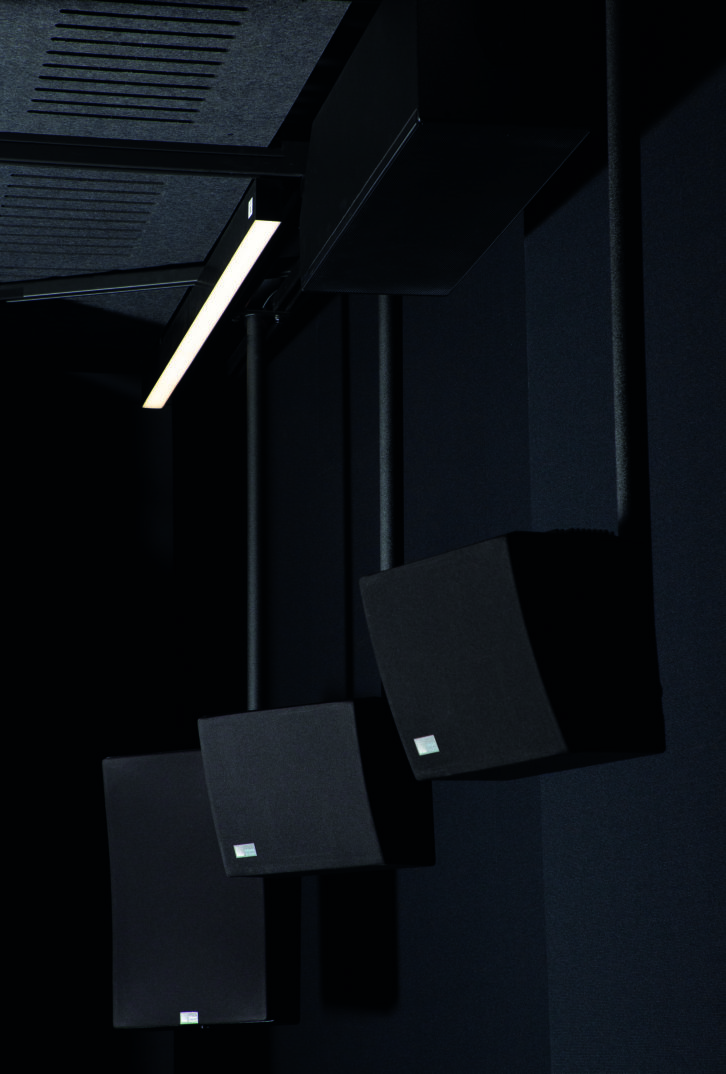
Meanwhile, the Meyer Ultra Reflex Solution is precisely that, a solution. The Netflix installation incorporates three Ultra-X42 loudspeakers mounted in the ceiling and aimed at the Crystal LED display to handle LCR, with 28 HMS Series powered monitors for the walls and ceiling, to go with four USW-210P subwoofers for surround bass management, five X-400C cinema subwoofers for LFE and two VLFC very low-frequency control elements for room-shattering bass. The room is Dolby Atmos-certified and has quickly recallable snapshots in Galaxy for theatrical Atmos or 9.1.6 home entertainment playback modes, in addition to recalling the Dolby recommendation of loudspeakers at the sides and top of the screen for A/B comparison.
Theoretically, other Meyer Sound loudspeakers would work, too as the system is scaled up or down in size and room volume. For an upcoming project, the company will be implementing line-array components across the front. The secret sauce is in the proprietary DSP optimization, supplied by a Galaxy 816 Network Platform.
“We have maintained the cinematic targets of headroom,” Rogers explains. “It’s not just about hitting a reference level of 85 dB, C-weighted in these rooms, it’s about maintaining 21.5 dB of headroom above that. That plays linearly, low-distortion and clean so that you can have that full power experience. I’m spoiled at Meyer Sound in that all our loudspeakers are built on a design platform of linearity through their entire operating range. That gives us the ability to scale up to big rooms and down to smaller rooms and maintain that same performance, right now.”
Bringing It All Together
While Sony’s Crystal LED technology provided the impetus for creating a new, leading-edge, future-proof, reference-quality stage, it was Meyer Sound’s solution to the LCR challenge that sealed the deal. After two-plus years of concepts, drawings, visits, updates and demos, it was time to build. The space, a former Deluxe screening room with significant acoustic design, was ready, and Ron Lagerlof of Visioneering Design was brought in to tie all the components together.
Lagerlof has arguably designed and integrated more immersive studios than anyone in the country, from the major film studios to private facilities. His surround sound credits predate the advent of 5.1, and many of his clients he is not allowed to divulge. He is one of those unique audio characters who combines a deep understanding of technologies with the heart of a mix engineer. He is also proficient in underwater photography, and his long hair was there long before the pandemic. He’s worked with Meyer Sound on many, many projects over the years. The Crystal LED Lab was his first for Netflix; more rooms are already in the works.
“It was really a well-designed room,” Lagerlof says. “We didn’t have to go into the walls, but of course there was additional acoustical treatment done by Studio 440. They did an amazing job in preserving the shape and the fabric of the room. And they created some custom ceiling panels to allow sound to just develop and not bounce around or be reflected back.
“You’re basically in the same kind of environment that you are in a traditional mixing room,” he continues. “So, you’re going to have some early reflections. You’re going to have to have absorption where you normally would have absorption. You don’t want slap echoes. That’s all having to be controlled pretty much the same. But what’s coming off of the Ultra Reflex speakers? You want to make sure that you’re not putting yourself in a position where you’re going to hear direct sound coming from the ceiling itself. You want to make sure you’re just hearing what’s being reflected in.”
“Quite frankly, when I heard what Meyer Sound was planning, my first thought was, ‘Are you kidding me? We’re going to get this off the screen?’” Lagerlof adds with a laugh. “But when I actually heard it, I noticed right off the bat that the clarity, the detail, was so much better, and the image was astounding. And I’m hearing reverbs and room tones and detail that you normally don’t hear coming from speakers behind a screen; it’s just there. Basically, my ears are telling me that what I’m hearing is accurate. Plus, the off-axis imaging is amazing. You can sit at the end of the console and still clearly hear the whole sound stage. It has a really nice, broad sweet spot.”
Lagerlof often works hand in hand with Ryan Hufford, his partner at Visioneering. The console is an Avid S6, and by the time they started room tuning and calibration, they had worked out some unique settings within the Avid MTRX to accommodate the flexibility of the space for theatrical or home playback.
The speaker tuning and speaker mapping was all done in Galaxy, with the left, center, right speakers around the screen and the Ultra Reflex and the subwoofers all done in one processor, and all the surround speakers and overhead speakers through other Galaxy processors, allowing them to address each speaker individually, or, for home playback, to address them as preset pairs when 32 channels of playback came down to 9.1.6.
“Those pairs were set up in Galaxy, and we can recall all of those presets from Crestron,” Lagerlof explains. “Jesse Coyne, here in our office, did some very elaborate Crestron programing—a nice GUI so you can select just the front speakers or, you know, this pair and not that pair, things like that. And then upstream of that, we are using the MTRX for switching between the outputs to bring up consumer playback. The Dolby CP-850 outputs are converted to Dante so that we could switch between the cinema processor and the Trinnov Altitude 32 AV processor.”
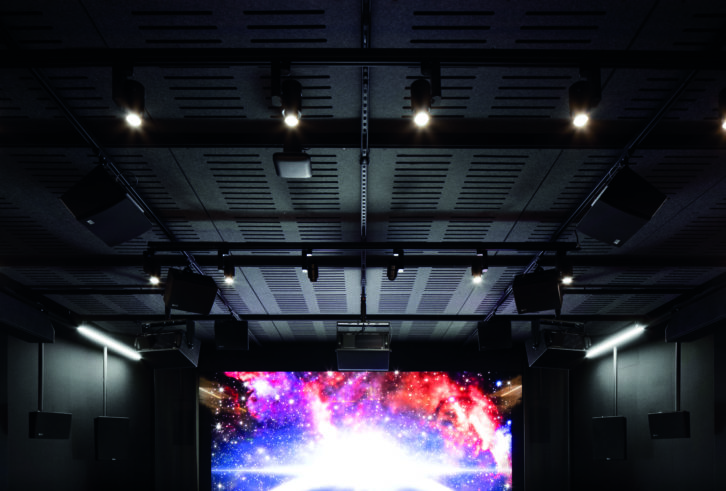
Raising the Bar for Streaming
Netflix has put a lot of effort into improving the streaming experience over the last decade, with a commitment of upfront costs that translate to customer trust and loyalty. The company has demonstrated its commitment by developing adaptive streaming technologies to improve bandwidth allocation for both picture and sound across the service, with 5.1 audio sounding identical to uncompressed masters in the home, not to mention the early adoption of 4K picture.
And they’ve demonstrated that to professionals by being the first to adopt Dolby Atmos mixes on delivery lists, and most recently with the opening of the Crystal LED Lab for content creators. The collaboration between Sony and Meyer Sound is an agreement to work together to push the state of the art, including in the Crystal LED Lab. This particular marriage of high-end sound and picture provides a roadmap for the future, as costs come down and direct-view displays become available to all. Since the completion of the Netflix room, Sony has already introduced two new models of Crystal LED panels, with, you can bet, more to come.
“That’s what’s really exciting to me,” says Rogers. “We have these high-brightness, high dynamic range displays, and when you combine that with Meyer Sound speakers in Dolby Atmos, it’s that combination of technologies and just that creative cinematic experience that becomes so immersive in every single way. It gives me the feeling that this is the future.
“It’s kind of a gift that Netflix has put this room together,” he adds. “Basically, they said, ‘Listen, we’ll build this room that supports the infrastructure, not only for Crystal LED, but for whatever loudspeaker layout we need to be able to support theatrical and home entertainment. And that’s exactly what they did.”
